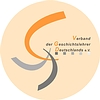


- Vortragstitel:
- The Globalization of Laparoscopic Sterilization
- Tag:
- 01.10.2010
- Epoche:
- Neuere/Neueste Geschichte
- Sektion:
- Creating a World Population: The Global Transfer of Techniques of Population Control
Abstract:
The Globalization of Laparoscopic Sterilization
Referent/in: Jesse Olszynko-Gryn, Cambridge
Abstract
The globalization of tubal ligation in the 1970s Jesse Olszynko-Gryn (History and Philosophy of Science, Cambridge) Abstract In the early 1960s, tubal ligation (female sterilization) was a risky in-patient procedure performed under general anesthesia in a hospital setting. International family planning organizations promoted vasectomy (male sterilization) instead, but women were still seen as ideal targets of surgical intervention. So in the late 1960s, resources were redirected towards the development of safer and more practicable forms of tubal ligation. In the early 1970s, a new key-hole (laparoscopic) surgical procedure known as “spring-clip sterilization” went from preliminary animal testing in North Carolina to large-scale clinical trials in Bangkok, Bombay, London, San Salvador, and Singapore. Today, tubal ligation is one of the most popular forms of contraception worldwide, and spring-clips continue to be used in hospitals. This paper shows how the globalization of tubal ligation was initiated by a special research and training program set up by American funding agencies (Ford Foundation, Rockefeller Foundation, USAID) with a shared concern for global population control. Founded in 1966 at the University of North Carolina, Chapel Hill, the Carolina Population Center (CPC) operated like a small on-campus foundation, channeling money from these agencies into various departments to establish new courses, recruit faculty, conduct research, and develop new technologies. As part of these initiatives, gynecological surgeon Jaroslav Hulka (b. 1930) developed a new procedure for the surgical insertion of so-called “Hulka clips”, miniature plastic clothespin-like instruments with metal teeth that clamp over and partially destroy the fallopian tubes, causing sterility. Compared to other forms of tubal ligation available to women at the time, this procedure was promoted as relatively safe, practicable, and inexpensive. Furthermore, it could be performed with local anesthetics on an outpatient basis in remote and poorly equipped locations far from any hospital. In the eyes of international family planning organizations, Hulka clips made tubal ligation “competitive” with vasectomy for the first time. On their promise it was hoped that more “Third World women” of childbearing age – the chief targets of family planning programs – would be willing to go under the knife. It was Hulka’s plastic clip that first enabled tubal ligation to go global. Even so, historians tend to “black box” surgical procedures, thereby concealing a diversity of instruments and practices, excluding them from narratives of international family planning. By focusing on the Hulka clip as a case study, this paper suggests how historians might broadly engage with surgical techniques and technologies, thereby producing a more nuanced account of the struggle to control global population.





